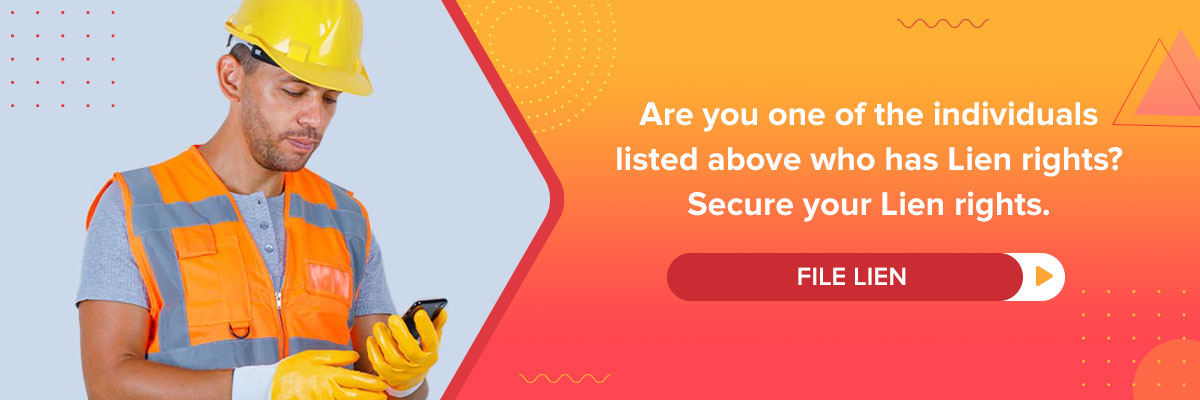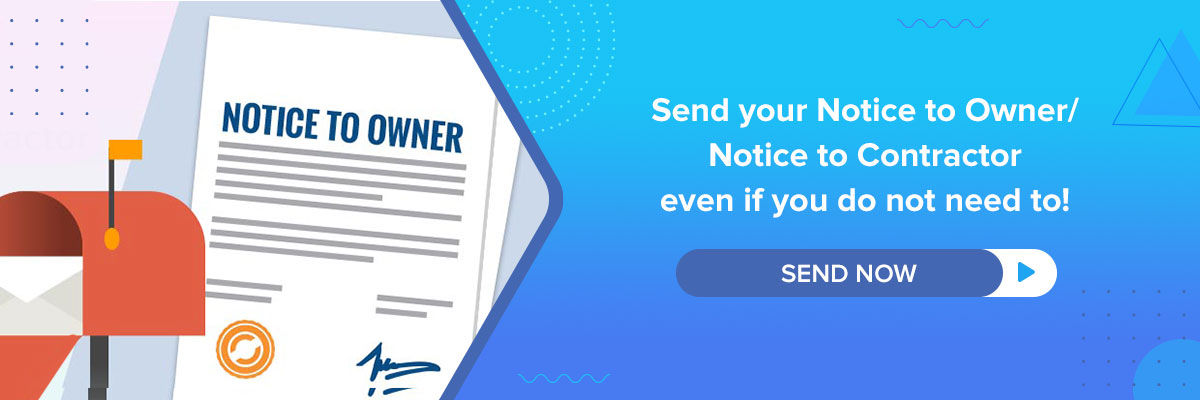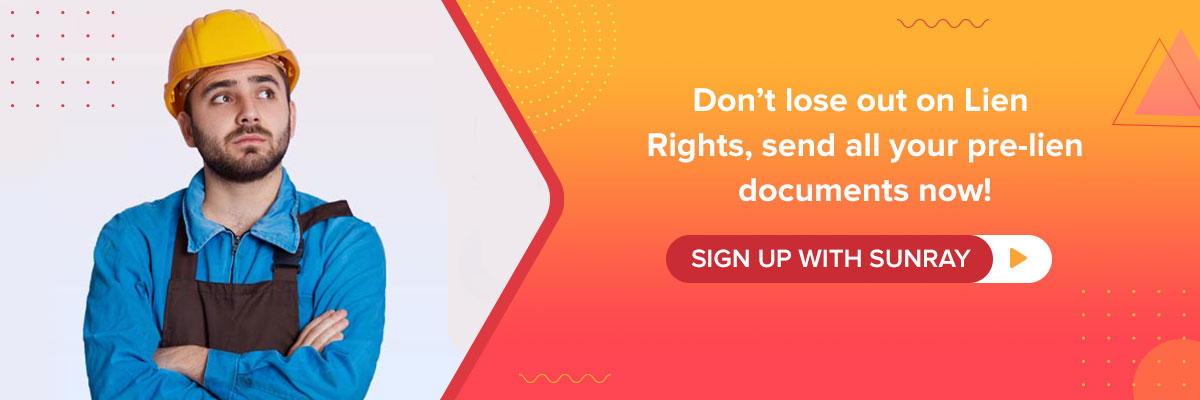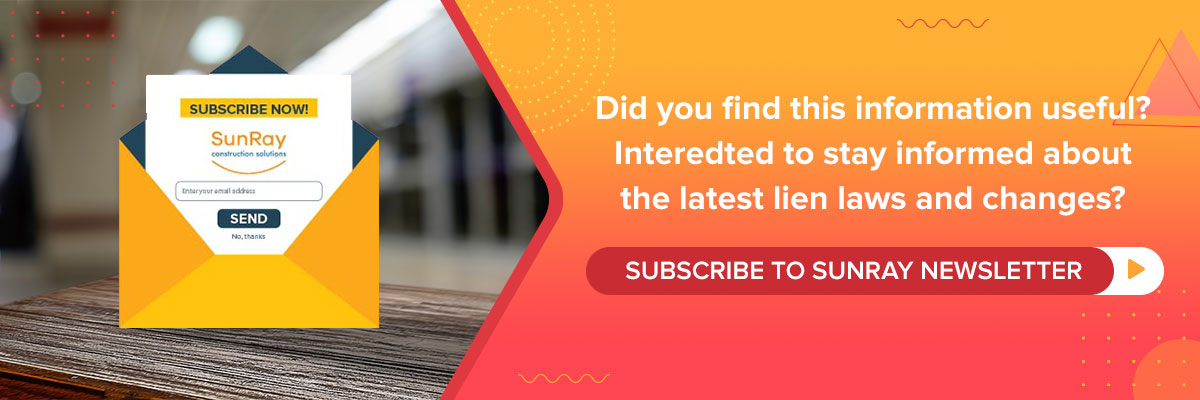Pay-When-Paid Sucks, So Do This to Get Paid Anyway - Webinar
Learn how to make a pay-when-paid provision enforceable as a general contractor, about lien and bond claim rights, and how to use magic language like condition precedent.
Last updated:
Dec
17
,
2025
Published:
Oct 15, 2020
15 Mins
Read
The focus of this webinar is on the pay-when-paid provision, the language that makes it enforceable, how to get rid of the provision, and how you can get paid.
This blog is taken from a webinar that was presented by SunRay Construction Solutions and Alex Barthet. Alex is a board-certified construction lawyer serving clients in the state of Florida. The focus of this blog is on what a pay-when-paid provision is, what language should be used to make a pay-when-paid provision enforceable.
What Is A Pay-When-Paid Provision?
In short, a pay-when-paid provision is a contract provision (so you need a written agreement), and that provision shifts the risk of nonpayment from one party to another.
The classic example that we see all the time, is the risk shifting between owner nonpayment and contractor nonpayment. So, if the owner does not pay the contractor, then the contractor does not have to pay the subcontractor. But it can exist in other places too.
For example, if you are a subcontractor, and you want to shift that risk to your sub-subcontractors, you can do that by having a written pay-when-paid provision in your sub-subcontract. So, if the owner does not pay the contractor, the contractor does not pay you as a subcontractor, then you can pass that nonpayment tangentially on to your subcontractor, so that you do not have to pay your sub-subcontractor.
In Florida, the pay-when-paid defense is valid and enforceable. You need to be keenly aware of what it looks like and how it works, so you can deal with it in your contracts. It is pretty common that almost every contract we see has a pay-when-paid provision in it. As a result, you should know that almost any contract you sign is likely going to have this pay-when-paid provision.
So, let us take a look at the magic language.
What Is the Magic Language that Makes the Pay-When-Paid Clause Enforceable?
Generally speaking, a pay-when-paid clause has to use the words “condition precedent” or “contingent upon” in the paragraph itself.
Here is a sample provision, it says “Under no circumstances shall the contractor be obligated to pay the subcontractor until funds have been advanced by the owner.”
Now this probably sounds like the pay-when-paid provision. The person who wrote it probably intended it to be, but the courts have specifically said that this is not a valid pay-when-paid provision. Because it does not have the magic language, this provision does not work.
Let us instead take a look at one that does: “Final payment ___ shall be made within 30 days of completion of the construction project, acceptance by the owner, and as a condition precedent, receipt of payment ___ from the Owner.”
This provision works because it has the magic language.
As A General Contractor, What Can I Do?
You want to have a pay-when-paid provision in your contract; it is absolutely critical. It is probably the single most significant contractual defense provision that you can have in your contract. You can always argue that the subcontractor is not entitled to payment because they were late, you had to supplement their forces, that their work was no good, they did not pay vendors, so you had to pay them yourself. But if everything goes right, and you are still not paid, then the only way you are going to get out of payment, is with the pay-when-paid provision because the owner didn’t pay you.
These are some things you can do as a general contractor:
1. Always have a written contract
Make sure that you have a written contract with your subcontractors.
2. Include “condition precedent” or “contingent upon” language
Make sure it has a pay-when-paid provision that is valid and enforceable, because it needs to have the written “condition precedent” or “contingent upon” language in it. If that language exists, you should be okay. Much more often than not, your provision will be found to be valid and enforceable.
3. If you bond the job, your bond is not subject to the pay-when-paid defense
If you bond the job, your bond is not subject to the pay-when-paid defense. Maybe you are a public general contractor and you are doing public work, or you do work with a private owner and they are expecting you to issue a bond. Just know that your bond is not subject to the pay-when-paid defense. And we will talk about this later, as a way for subcontractors to get paid even if they sign a pay-when-paid defense.
If you as a general contractor do everything right, you get a written agreement with your subcontractor and the subcontract has a pay-when-paid provision, but if you issue a payment bond on the project, your surety is not entitled to use the pay-when-paid defense. But they can use the defense that the work was no good, the project was late, or the imposition of liquidated damages as a way to offset payment. So, when you are a bonded contractor, know that that defense does not exist for your surety.
There is one very narrow situation in which it does, and that is if you issue what is called a “conditional payment bond.” But those are very rare. Out of every 100 bonds seen, one or two are conditional bonds. And they are not allowed on public jobs. So just know that there is a way to make your bonding company have the benefit of the pay-when-paid and that is called the conditional payment bond, but it is very rare. And most owners who know what they are doing, will not accept a conditional payment bond because they do not want you to have the pay-when-paid defense.
4. If you agree with the owner to pay your final bills before your payment, it may invalidate your pay-when-paid provision
If you agree with the owner to pay your final bills before you get paid, it may invalidate your subcontract pay-when-paid provision. If you agree with the owner to pay your final bill, you want the owner to agree that they are going to pay you, as the general contractor, that final payment. This is just like how they pay every other payment. What this means is, typically, when you get paid on a construction project, you provide conditional releases for the current payment and unconditional releases for the month prior, where you had already received the payment.
So, you effectively provide trailing releases – releases that are conditional today but become unconditional when you make the payment. Many contracts include a provision that says when you, as the general contractor, get to the end of the job, you need to give an affidavit or release that says you paid everyone before the owner gives you the final payment. If you have a contract provision like that in your prime contract (the contract between you and the owner), then that may invalidate the pay-when-paid provision with your subcontracts. So, you just need to be very careful with how that provision is written.
5. Force the subcontractor to keep working during a dispute
The other thing that you want to do is be certain that you are forcing your subcontractors to keep working during the course of the nonpayment or dispute situation. Here is a sample provision that we see existing in many prime contracts:
Subcontractor shall diligently proceed with the work during any dispute even as it relates to payment or changes. The existence of a dispute shall not be grounds for any failure to perform by a Subcontractor.
So, this makes it very clear that the subcontractor, that even if you have not paid them, or if there is a dispute related to work or changes, they have to keep working. Again, this is a pretty common provision that we see in most subcontracts.
Protect Your Rights with a Notice to Owner
Sending a notice to owner is the first step to secure payment on construction projects. Learn how a notice to owner Florida helps protect your lien rights and ensures you get paid.
Protect Your Payment Rights with Florida’s Most Trusted Notice & Lien Services
Notice to Owner – Secure your lien rights early. File your NTO now!
Notice to Owner Florida – Stay compliant with Florida deadlines. Send your NTO today!
Mechanics Lien Florida – Get paid faster. Start your Florida lien process now!
As A Subcontractor, What Do I Do?
These are the things you want to do as a subcontractor:
1. Strike the provision or the magic language
Strike the provision (the pay-when-paid provision), because it is probably not going to happen. Very rarely do people have success at striking just the magic language - that condition precedent or contingent upon language. So, they leave the pay when paid provision in, but they just strike those few words. That sometimes happens when you’re negotiating with the other side, and they don’t understand the significance of those words.
2. Look at the prime contract
Before, we discussed about the prime contract requiring that the contractor provide releases to the owner, before the owner makes final payment. If that exists, then even if you have a pay-when-paid provision in your contract, you may be able to invalidate it because that completely separate provision exists in the prime contract.
Again, it is a very narrow situation; it almost only comes up when you get to the final payment. Because that is usually when it exists in the prime contract. But it is worth looking at, and your subcontract probably says that it incorporates the prime contract so you should be getting a copy of that prime contract anyway and seeing the provisions in it.
Because you are agreeing not only to the provisions in your subcontract, but all the provisions in the prime contract, it would be nice to know what those provisions are. Not just payment provisions but other provisions. For all you know, there is a $10,000 liquidated damage provision in the prime contract that you may be obligated to even it is not written word for word in your subcontract.
3. Lien or make a bond claim
If you have lien rights, or you have a bond claim, those rights are not subject to the pay-when-paid defense. So, if you sign a contract with a general contractor as a subcontractor, you do not get paid because the contract has not been paid by the owner. And you have lien rights. When you timely record your lien, the owner does have the benefit of a pay-when-paid defense, so you can move forward and foreclose on your lien. So keep in mind, that it is absolutely critical for to you timely secure your lien and bond rights. Again, we will talk about that below.

4. Include a stop work provision in your contract
We strongly encourage that you as a subcontractor, include what is called a “stop work” provision in your contract. You are probably not going to be able to negotiate out the pay-when-paid provision. But what you probably can negotiate in, is some version of a stop work provision. Here is a sample of a very simple one: “Subcontractor can slow or stop work without liability or penalty if it has not been paid its drawn request in 30 days after submission.”
Now we are not suggesting that a contractor is going to agree to this as written. Maybe they will say 45 days or 60 days or 90 days. Maybe they have some other tweaks that they want to make but having the ability to stop work if you are not paid, is probably the single most important change or addition you can make to most subcontracts.
Because imagine this: you are doing work on a project, you have a dispute, the owner is not paying, there are the usual change orders, and you have signed a contract that requires that you keep working no matter what. Who is financing the job? You are financing the job. So, you need to find a way to be able to stop the bleeding. Again, it may not entitle you to payment but at least it gives you the ability to stop working, so keep that in mind.
How does the pay-when-paid provision affect suppliers?
So, how does pay-when-paid affect suppliers? In short, it does not. If the only agreement that exists between you and your customer (you, the supplier and your customer) whether that is the owner, the general contractor, the subcontractor, is your credit application, your credit application does not include any type of pay-when-paid provision. It probably has very specific terms, possibly even a guarantee of some sort. So, pay-when-paid does not directly affect suppliers because there is no written agreement that has a pay-when-paid provision in it.
Here is where we see one major exception, and it is important as a supplier to be aware of this. Sometimes you may fill an order on receipt of a written purchase order. And that purchase order may in fact include terms and conditions. If it does, and one of those terms and conditions is the pay-when-paid provision, then even if they have signed your credit application, you may not even have to sign it, but you subsequently fill a purchase order which has terms and conditions. You may be obligated and bound by that pay-when-paid provision.
So, what does that mean as a supplier? You need to be absolutely certain that your team knows that if you are filling orders against a purchase order you receive, the purchase order has terms and conditions. If so, what are those terms and conditions, and do you agree to them? Also be aware that some terms and conditions may be found on a website, which is perfectly legal.
For example, the purchase order may ship you 40 truckloads and schedule 40 pipe. And it says this purchase order is subject to the terms and conditions found at www(dot)-such and such website. You go to that website and it has a pay-when-paid provision and you may be bound as a supplier to those terms and conditions. So, you need to be very careful in looking at purchase orders when they come in.
Do not fill the purchase order without sending back some written document saying that you do not agree to these terms and conditions. Mention that your terms and conditions are the ones found in your credit app, and to confirm before you ship. Or you negotiate the terms of the purchase order. So, be very careful about filling purchase orders that have terms and conditions.
The converse is also true. If you are a subcontractor or contractor, placing orders with your supplier, if you send them a written purchase order that has terms and conditions including a pay-when-paid, you may bind them potentially to your pay-when-paid defense if you have that in your purchase order.
What About My Lien and Bond Rights?
Everyone is on the same page about how they work and the timing of them. So, who can make a lien or bond claim in the state of Florida? Those who can lien or make bond claims include:
- Laborers – This is John Smith the carpenter. He or she can record a lien on a project.
- Architects, engineers, and land surveyors. They all have lien rights
- Contractors – This is anyone in direct contract with the owner. So, if you are an electrician and you have a direct contract with the owner, under the lien law, you are a contractor.
- Subcontractors
- Sub-subcontractors
- Material suppliers/rental companies to owners, building contractors, subcontractors, and sub-subcontractors – This is the bottom rung of the folks that have lien rights. Anyone that comes after them on the chain of contracts has no lien or bond rights.
Know more: How Do I Get Paid on a Public Project If There Is No Bond?

So, a material supplier to a material supplier does not have lien rights. If a material supplier and another material supplier buy materials from you, they may have lien or bond rights, but you won't because you sold it to a material supplier. A sub-sub-subcontractor also does not have lien rights.
So, assuming you have lien rights, how do you perfect those lien rights?
Step 1: Within 45 days of your first work, you must serve your Notice to Owner (liens) or Notice to Contractor (bonds)
When you use SunRay, you use what is called a combined form, which is both the Notice to Owner and the Notice to Contractor form together. It is one document, and it covers both jobs that you can lien and jobs that you have bond rights on. Forty-five days is the absolute last day for that document to be physically received by the owner or the contractor and surety for it to be valid.

When you use SunRay, what we use is a manifest. And there is a rule in the lien law that says if we bring it to the post office by the 40th day, and our manifest is stamped, (we go to the post office every day, even during the coronavirus), then whether or not it is actually received by the owner, contractor, or surety, it is deemed delivered.
So why is this important to you? This is absolutely critical for you so that you do not delay in requesting and serving your Notice to Owner. We suggest that you do it within days after starting work on a job or first delivering material on a job, or after you sign a contract on a job. There is nothing wrong with doing it early in the 45 days. You run into big problems when you do it too late.
Obviously, if you have a direct contract with an owner, you do not need to send a Notice to Owner. It is imperative that you do though, because it is a great collection tool, and it is relatively inexpensive. So, even if you are a contractor and you do not have to send a Notice to Owner, you should do it. If you are a subcontractor to a bonded contractor, let us say you are the electrician to the bonded contractor who is working for Miami-Dade county schools, you do not need to send a Notice to Contractor which is the document to give you rights on the bond because you have a direct contract with that bonded contractor.
In your office, determine that any job over a certain amount, whether $200, $500, or $2,500, any job over a threshold, that you notice. Period. Where people make mistakes and lose money is where they try to manage their notices so closely that they think they need one on one job, but they do not need one on another one. That is when we see mistakes happen. It does not take much for you to lose lien rights on the job where you are owed. It may not be a lot of money, but that by itself would have paid to notice all of the jobs for the rest of the year, whether you needed them or not. Notice all your jobs so that you do not run into an issue.

Step 2: Within 90 days of your last work, you must record your lien or serve your Notice of Non-payment on the contractor and surety
Ninety days is not three months. Some months have more than 30 days, some months have fewer than 30 days. So, remember that you need to count correctly. Do not wait until Day 88 to start the process. We recommend that you start the process at about Day 60, after your last work to move forward and put together the lien. Because it takes time to sign, prepare, notarize, and record. Even electronically takes several days. And also remember that last work does not include punch list or warranty work. It has to be contract work or change order work that is approved for it to count as your last work.
Step 3: Within 15 days of recording the lien, you must serve the lien on all interested parties
Again, when you use SunRay and their attorneys, we take care of the recording and mailing for you.

Step 4: For liens, those in privity with the owner must provide a Contractor’s Final Affidavit at least five days prior to filing suit on the lien
We recommend that this is done at the time your lien. You could do it later, but that is an additional requirement, that if you are in direct contract with the owner, you need this additional document, not recorded, just served on the owner.
Step 5: For lien, file a lawsuit to foreclose within one year of recording the lien
For bonds, file a lawsuit against the bonding company and contractor within one year of your last work. So, notice there is a difference between the two. For liens, it is from the date of the lien and for bonds it is the date of your last work, which could potentially have up to a 90-day difference. But we strongly encourage you not to be waiting anywhere near that long. We would say within 60 days give or take, of you recording a lien or sending your Notice of Non-payment, if you have not been paid. And if you have no other reason to wait, then you should go ahead and start the legal process.

Sunray Construction Solutions offers professional "Notice to Owner Florida" services to help you secure your mechanics lien florida rights in the construction industry. Looking for a free Notice to Owner form in Florida? Get your free, editable "Florida Notice to Owner Template" today for easy and accurate preparation.



.jpg)








